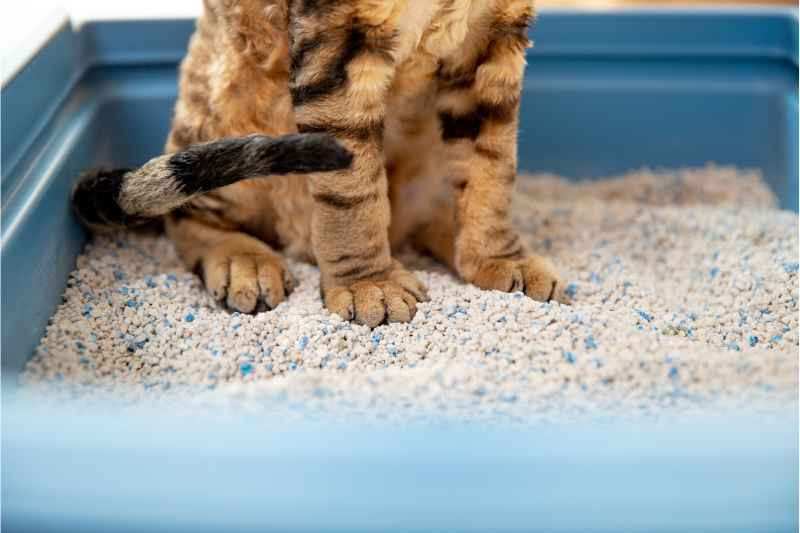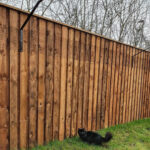Cats can be adorable pets, but when they start treating your yard as their personal playground or litter box, it can become a real nuisance. Whether it’s digging in your garden beds, lounging on your patio furniture, or leaving unwanted “presents,” stray and outdoor cats can quickly become unwelcome visitors. If you’re wondering how to keep cats out of your yard without resorting to harmful methods, you’re in the right place. This guide will explore various effective and humane strategies to deter cats and reclaim your outdoor space.
Understanding the Cat Problem: Indoor vs. Outdoor Felines
Historically, cats played a vital role in controlling rodent populations, often living entirely outdoors. However, with the advent of kitty litter, domestic cats largely transitioned to indoor living. Yet, outdoor cats remain a common sight, falling into a few categories:
- Owned Outdoor Cats: Some pet owners allow their cats to spend a significant amount of time outdoors.
- Stray Cats: These are socialized cats without a specific owner, often roaming neighborhoods.
- Feral Cats: Unsocialized to humans, feral cat colonies can establish territories in residential areas, using yards for various purposes, including waste disposal.
Regardless of their type, outdoor cats in your yard can be problematic. Let’s delve into practical solutions to gently encourage them to find a different outdoor space.
11 Proven Ways to Deter Cats From Your Yard
Finding the perfect cat deterrent might require some experimentation. Cats are individuals, and what works for one might not work for another. Often, a combination of methods proves most successful. Here are 11 strategies to help you keep cats away from your yard:
1. Utilize Scent Repellents: Essential Oils and Spices
 image of a black pepper in a wooden spoon
image of a black pepper in a wooden spoon
Many scents are naturally offensive to cats and can act as effective deterrents. You can create homemade sprays using essential oils diluted in water or sprinkle dry spices directly in your garden. Consider these scents that cats typically dislike:
- Citrus: Lemon, orange, and grapefruit scents are generally unpleasant to cats.
- Spices: Black pepper, cayenne pepper, cinnamon, and chili powder can be irritating to their sensitive noses.
- Herbs: Lavender, lemongrass, rosemary, rue, and thyme are aromatic plants that cats tend to avoid.
- Vinegar: The strong, pungent smell of vinegar can also deter cats.
How to use scent repellents:
- Homemade Spray: Mix essential oils (like citrus or lavender) with water in a spray bottle. Apply around garden beds, plants, and areas where cats frequent. Reapply after rain.
- Spice Sprinkling: Lightly sprinkle spices like black pepper or cayenne pepper around vulnerable areas. Use caution with strong spices, as they can be irritants.
- Commercial Repellents: Numerous commercial cat repellent sprays are available, often containing essential oils or plant-based ingredients. Follow product instructions for application and reapplication.
Important Note on Strong Spices: While spices like cayenne and black pepper are effective, they can cause discomfort to cats. Use them sparingly and consider more humane alternatives first.
2. Employ Citrus Peels and Coffee Grounds as Natural Deterrents
 Image of orange peels
Image of orange peels
If sprays aren’t ideal for your situation, citrus peels and coffee grounds offer alternative scent-based deterrents.
- Citrus Peels: Save peels from lemons, limes, and oranges. Chop them into smaller pieces and scatter them around your yard, especially in areas where cats are problematic. Replace peels as they decompose.
- Coffee Grounds: The strong aroma of coffee grounds is disliked by many cats. Spread a thin layer of used coffee grounds around plants or garden beds. Reapply weekly, or after heavy rain.
Caution with Coffee Grounds: While effective, avoid piling coffee grounds too thickly, as excessive caffeine can be harmful to cats if ingested in large quantities. A thin layer is sufficient for deterrence.
3. Plant Cat-Repelling Plants in Your Garden
 citronella mosquito repellent plant
citronella mosquito repellent plant
For a more permanent and aesthetically pleasing solution, incorporate plants that naturally repel cats into your landscaping. These plants emit scents or textures that cats find unappealing. Consider planting:
- Citronella: Known for its mosquito-repelling properties, citronella also deters cats.
- Lavender: While humans often love lavender, cats generally dislike its strong floral scent.
- Rosemary: This fragrant herb is another cat repellent plant.
- Rue: Rue has a pungent odor that cats find offensive.
- Pennyroyal: A member of the mint family, pennyroyal is known to repel cats and insects.
- Lemongrass: Similar to citronella, lemongrass has a citrusy scent disliked by cats.
- Geraniums: Some geranium varieties are known to deter cats.
- Curry Plant: The strong aroma of curry plants can also be a feline turn-off.
- Eucalyptus: The potent scent of eucalyptus is generally avoided by cats.
“Scaredy Cat Plant” (Coleus canina): This plant is specifically named for its cat-repelling qualities. It emits an ammonia-like smell that cats find very unpleasant, though some humans may also find the scent noticeable.
Planting Density: Increasing plant density in your garden can also reduce exposed soil, making it less attractive for digging and using as a litter box.
4. Utilize “Pointy” Mulch and Physical Barriers
Cats prefer soft surfaces for walking and digging. Making the ground less comfortable under their paws can deter them. Employing “pointy” mulch and physical barriers can be effective:
- Pointy Mulch: Mix sharp but not harmful materials into your mulch, such as:
- Eggshells: Crushed eggshells provide a crunchy, uncomfortable surface.
- Pine Cones: Pine cones, or pieces of pine cones, offer a prickly texture.
- Holly Cuttings and Rose Cuttings: Prickly cuttings from holly or roses can be mixed into mulch.
- Twigs: Small twigs can also create a less desirable surface for cats.
- Chopsticks or Plastic Forks: Insert chopsticks or plastic forks, points up, into the soil around plants, spaced about 8 inches apart.
- Coarse Mulch: Using coarser mulches like stone or wood chips can be less appealing to cats than fine mulch.
- Chicken Wire or Bird Netting: Lay chicken wire, black bird netting, or mesh produce bags just under the soil surface in garden beds. This prevents cats from digging easily.
- Prickle Strips: Commercially available “prickle strips” are rubber mats with blunt prickles that are uncomfortable for cat paws but not harmful.
- Latticework Fencing: Lay latticework fencing flat on the ground and plant through the holes. This creates a physical barrier while still allowing plants to grow.
Important Note on Safety: Avoid using excessively sharp or dangerous materials that could injure cats’ paws. The goal is to create an unpleasant texture, not to cause harm. Organic mulch materials are beneficial as they also improve soil health.
5. Sprinkle Predator Urine to Mimic Natural Threats
In the natural world, cats are prey animals for larger predators. Utilizing predator scents can tap into their instinctual fear response.
- Predator Urine Sprays: Products containing the urine of predators like coyotes, foxes, or bobcats are available. These scents signal danger to cats, prompting them to avoid the area. Spray or sprinkle these products in areas where you want to deter cats.
Ethical Considerations: Be mindful that some predator urine products might be obtained through methods that are not considered humane. If ethical sourcing is important to you, consider other deterrent methods.
6. Employ Ultrasonic Animal Repellents for Silent Deterrence
Ultrasonic animal repellents emit high-frequency sound waves that are inaudible to humans but unpleasant to cats and other animals. These devices offer a non-toxic and generally humane way to deter cats.
- Motion-Activated Ultrasonic Devices: Many ultrasonic repellents are motion-activated, meaning they only emit sound when they detect movement. This conserves energy and prevents cats from becoming accustomed to a constant sound. These devices can be battery-operated or plugged in.
Coverage Area: Check the coverage area of the device to ensure it’s suitable for the size of your yard. Some models can cover up to 5,000 square feet.
Consider Other Pets: Be aware that ultrasonic repellents can also affect dogs and other pets that can hear these frequencies.
7. Install Motion-Activated Sprinklers for a Startling Surprise
 cat near a sprinkler
cat near a sprinkler
Motion-activated sprinklers provide a sudden, startling burst of water that cats dislike. This method is generally safe, humane, and effective at deterring cats from entering specific zones.
- Motion Sensor Sprinklers: These sprinklers are equipped with motion sensors that trigger a spray of water when movement is detected within their range. They can be easily installed in your yard and connected to a water source.
Adjust Sprinkler Settings: Adjust the sprinkler heads to direct the spray towards the areas you want to protect and avoid spraying walkways or driveways unnecessarily. You may need to experiment with sensitivity settings to optimize performance.
DIY Sprinklers: You can also create your own motion-activated sprinkler system using readily available components.
8. Hang Noisemakers: Aluminum Foil and More
Cats are sensitive to unusual noises and textures. Noisemakers and certain materials can create an environment they prefer to avoid.
- Aluminum Foil: Cats often dislike the feel and sound of aluminum foil under their paws. Place sheets of aluminum foil in problem areas, on fences, or patio furniture.
- Sheet Metal or Bubble Wrap: Similar to aluminum foil, these materials can be unpleasant for cats to walk on.
- DIY Noisemakers: Create simple noisemakers that will move in the breeze and produce sounds that deter cats:
- Aluminum Pie Pans: Hang disposable aluminum pie pans on stakes or strings so they clang together in the wind.
- Sheet Metal Strips: Hang strips of sheet metal to create rattling sounds.
- Old Utensils: Hang old eating utensils that will chime or clatter in the wind.
Temporary Effectiveness: Cats may become accustomed to noisemakers over time, so vary the type of noise or move the noisemakers periodically.
Active Noisemakers: If you spot a cat in your yard, you can also use active noisemakers to startle them away, such as shaking a can with marbles, blowing a whistle, or using an air horn (use sparingly and responsibly). Again, rotate noise types to prevent habituation.
Caution for Pet Owners: Avoid using startling methods like aluminum foil to deter your own indoor cats from countertops, as it can cause stress and behavioral issues. Instead, use positive reinforcement to redirect them.
9. Erect a Tall Fence or Install Fence Toppers
For a more substantial and long-term solution, consider physical barriers like fencing.
- Tall Fences: A tall fence can effectively prevent cats from entering your yard, especially fences made of materials like vinyl that are difficult for cats to climb due to their smooth surfaces.
- Fence Toppers: If you already have a fence, consider adding fence toppers to make it more cat-proof:
- Prickle Strips: Attach prickle strips to the top of the fence to deter climbing.
- Roll Bars: Install roll bars at the top of the fence. These rotating bars prevent cats from gaining a foothold to climb over. DIY roll bar fence options are available, or you can purchase pre-made roll bar systems.
10. Create a Designated Outdoor Litter Box
 brown cat sitting on a litter box
brown cat sitting on a litter box
In some cases, redirecting cat behavior can be more effective than simply trying to repel them. If cats are using your yard as a litter box, consider providing an alternative.
- Outdoor Litter Area: Designate an inconspicuous area of your yard as a cat litter box. This could be a patch of loose soil, sand, or a sandbox.
- Maintenance: Regularly rake and clean the outdoor litter area, just as you would an indoor litter box. Cats prefer clean litter areas.
By providing a more appealing and designated bathroom spot, you might entice cats to use it instead of your garden beds.
11. Eliminate Attractants That Draw Cats to Your Yard
Often, cats are attracted to yards because of available resources. Removing these attractants can significantly reduce cat visits.
- Food Sources:
- Pet Food: If you feed pets outdoors, promptly remove food bowls after meals and avoid leaving food out overnight. Consider moving pet feeding indoors.
- Human Food: Clean grills after use, and avoid leaving picnic leftovers or trash outdoors.
- Trash Cans: Secure trash can lids to prevent cats from accessing food scraps in garbage.
- Shelter:
- Seal Entry Points: Seal holes in foundations of houses or sheds that could provide shelter for cats. Before sealing, ensure no cats are trapped inside, especially during kitten season.
- Pest Control:
- Yard Cleanliness: Keep your yard tidy by raking leaves, removing brush piles, and eliminating potential hiding places for rodents, which are a primary food source for cats. Consider leaf removal services for efficient yard cleanup.
- Bird Feeders: Bird feeders can unintentionally attract cats that prey on birds.
- Relocate Feeders: Place bird feeders in open areas where cats cannot easily ambush birds.
- Temporary Removal: Consider temporarily removing bird feeders until you have the cat situation under control.
- Catnip: Avoid planting catnip in your yard, as it is highly attractive to cats and will draw them in.
FAQ About Keeping Cats Out of Your Yard
Why is it Important to Keep Cats Out of Your Yard?
While cats can be beneficial in controlling rodents, there are many reasons why you might want to deter them from your yard:
- Wildlife Habitat: If you’ve created a certified wildlife habitat in your yard, cats can disrupt the ecosystem and prey on native animals.
- Allergies: Cat allergies are common, and outdoor cats can exacerbate allergic reactions.
- Pet Stress: The presence of outdoor cats can stress indoor cats or dogs, causing anxiety or territorial behavior.
- Hygiene: Cat feces in gardens and yards are unpleasant and can pose health risks.
- Garden Damage: Cats can dig in gardens, damage plants, and use garden beds as litter boxes.
Health Concerns: Cat feces can carry parasites like salmonella, hookworms, tapeworms, and Toxoplasma gondii (toxoplasmosis). While the risk to healthy adults is generally low, individuals with weakened immune systems and pregnant women are more vulnerable. Always wear gloves when gardening and handling soil. Cat litter boxes should be cleaned daily to minimize the risk of toxoplasmosis, as the parasite becomes infectious a few days after excretion. Pregnant women should avoid handling cat litter altogether.
Is Trapping Cats a Good Solution?
Trapping cats should be a last resort and considered carefully.
- Shelter Capacity: Animal shelters are often overcrowded, and trapped cats may face euthanasia.
- Humane Trapping: If trapping is necessary, use humane live traps. Check local laws regarding trapping, as it may be regulated or illegal in some areas.
- Shelter Coordination: Before trapping, identify a shelter that can accept the cat.
- Trap Monitoring: Check traps hourly to prevent distress to captured animals and to release non-target animals (raccoons, opossums, skunks).
- Neighbor Notification: If trapping in a residential area, inform neighbors to avoid trapping owned pets. Notify shelter staff if a pet cat is trapped.
Trap-Neuter-Return (TNR) Programs: Many communities have TNR programs to manage feral cat populations humanely. While TNR reduces populations over time, neutered feral cats may still roam your yard, requiring continued deterrent efforts.
What Should You Never Use to Repel Cats?
Avoid using harmful or inhumane methods to deter cats.
- Mothballs: Mothballs contain naphthalene, which is toxic to cats. Even inhalation or skin contact can cause illness, and ingestion can be fatal. Using mothballs as cat repellent is illegal and inhumane.
- Toxic Plants: Avoid planting plants that are poisonous to cats, such as lilies, tulips, azaleas, daffodils, and amaryllis, as cats may ingest them and become ill.
Seeking Professional Lawn Care Assistance
Maintaining a beautiful, cat-free lawn can be challenging. Consider contacting a LawnStarter lawn care professional to handle lawn maintenance tasks like mowing. They may also offer additional advice on managing cats in your yard based on their local experience.
Additional Resources:
Cats Away
Pests Banned
The Commons
Catster
UW Botanic Gardens
Arizona Cooperative Extension
Main Image Credit: Unsplash
Author: Pat Joiner (Adapted and enhanced from original article)

